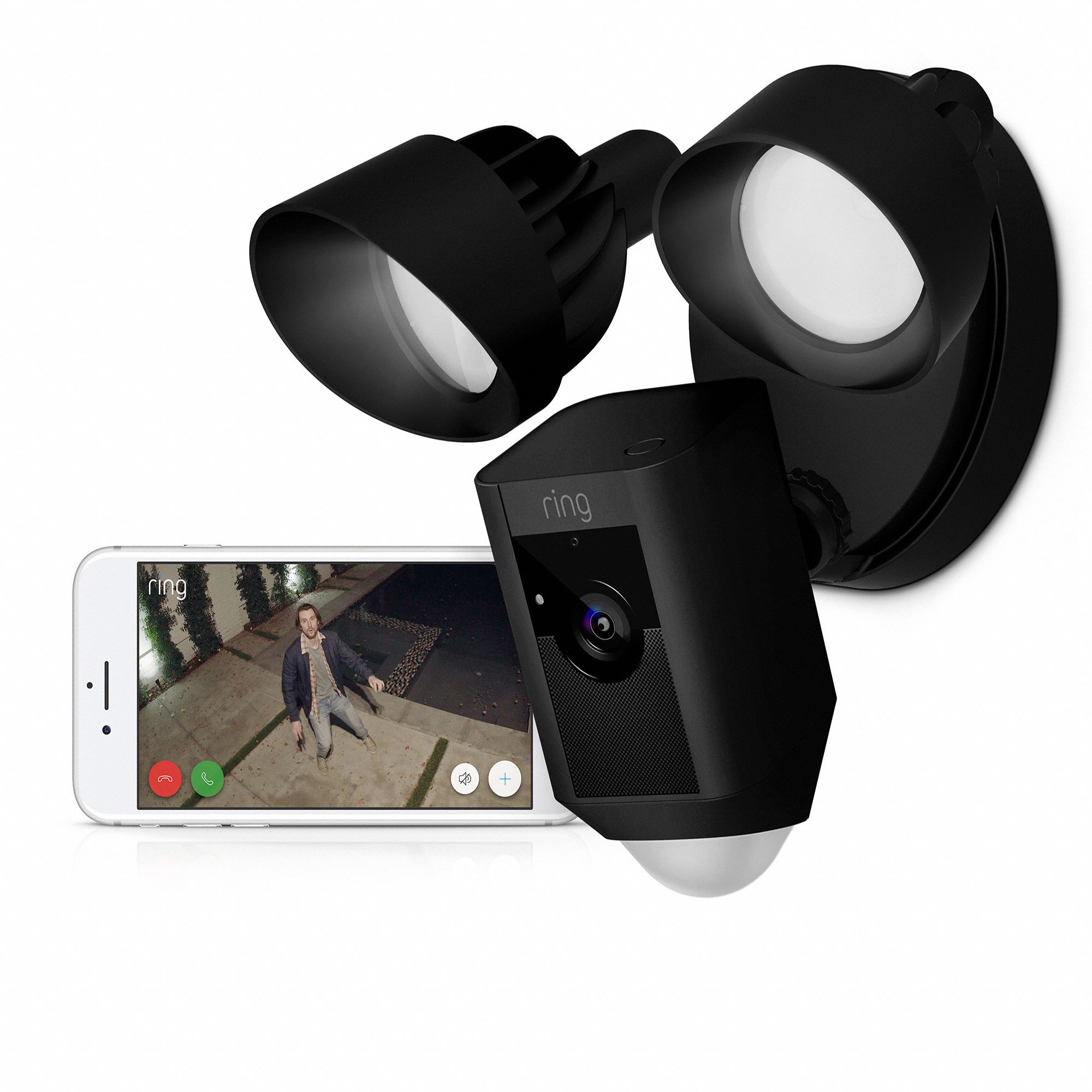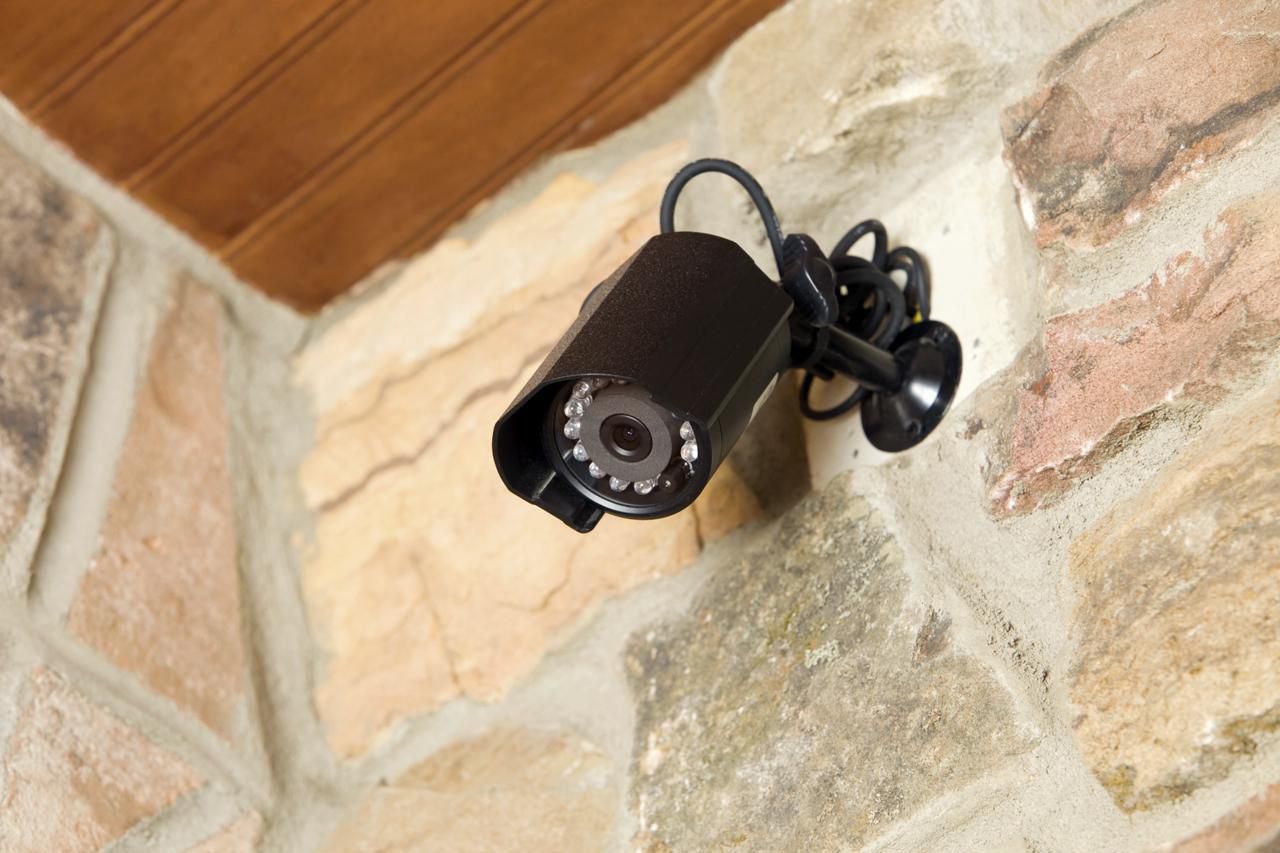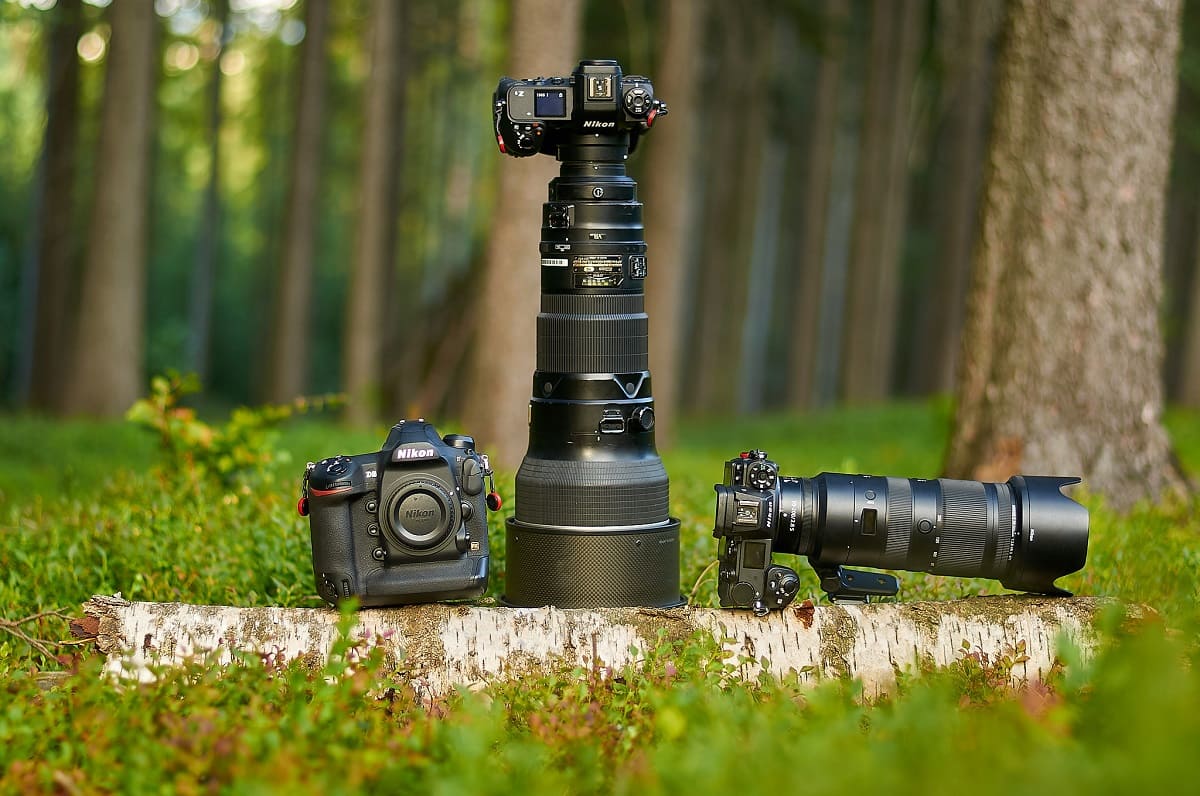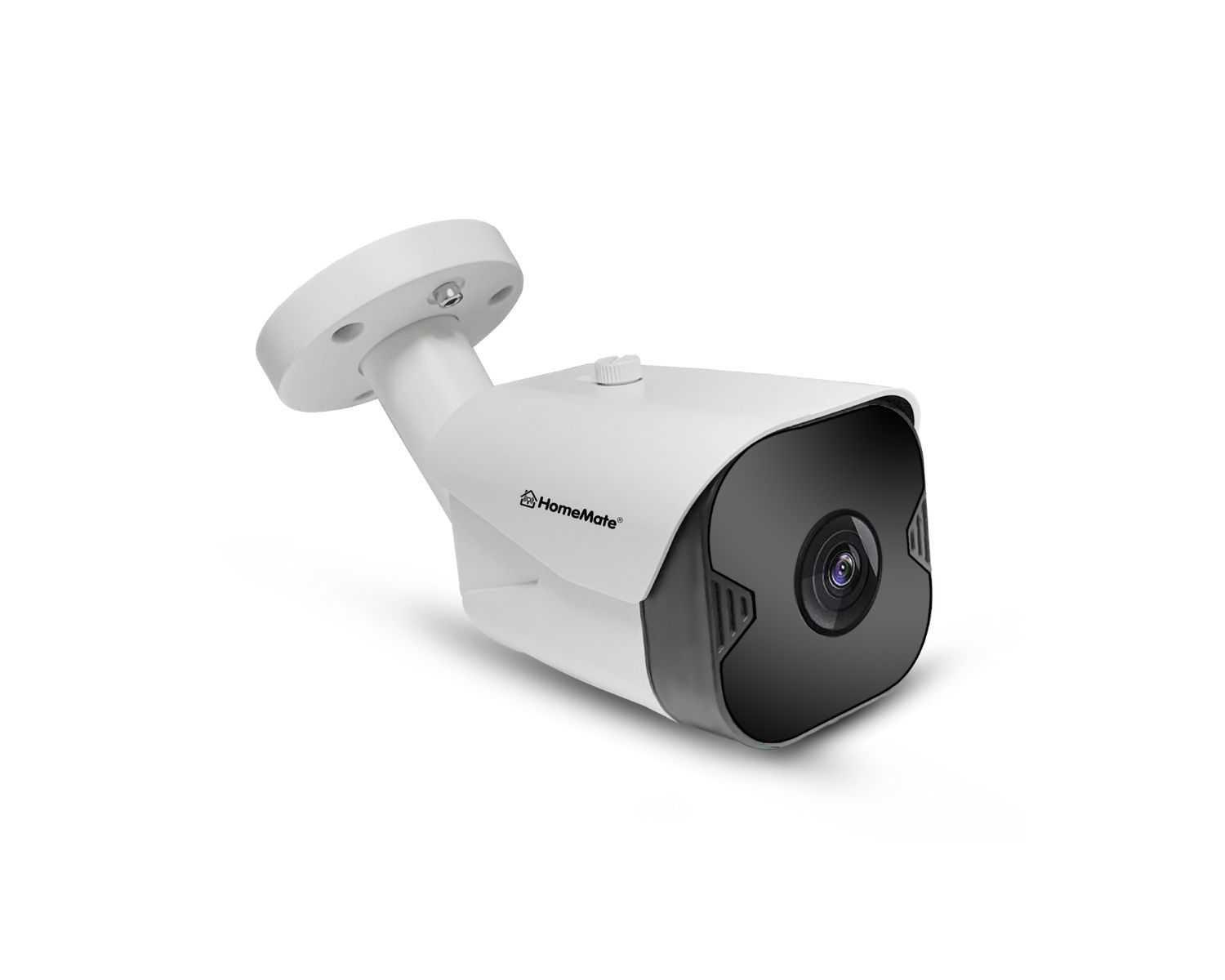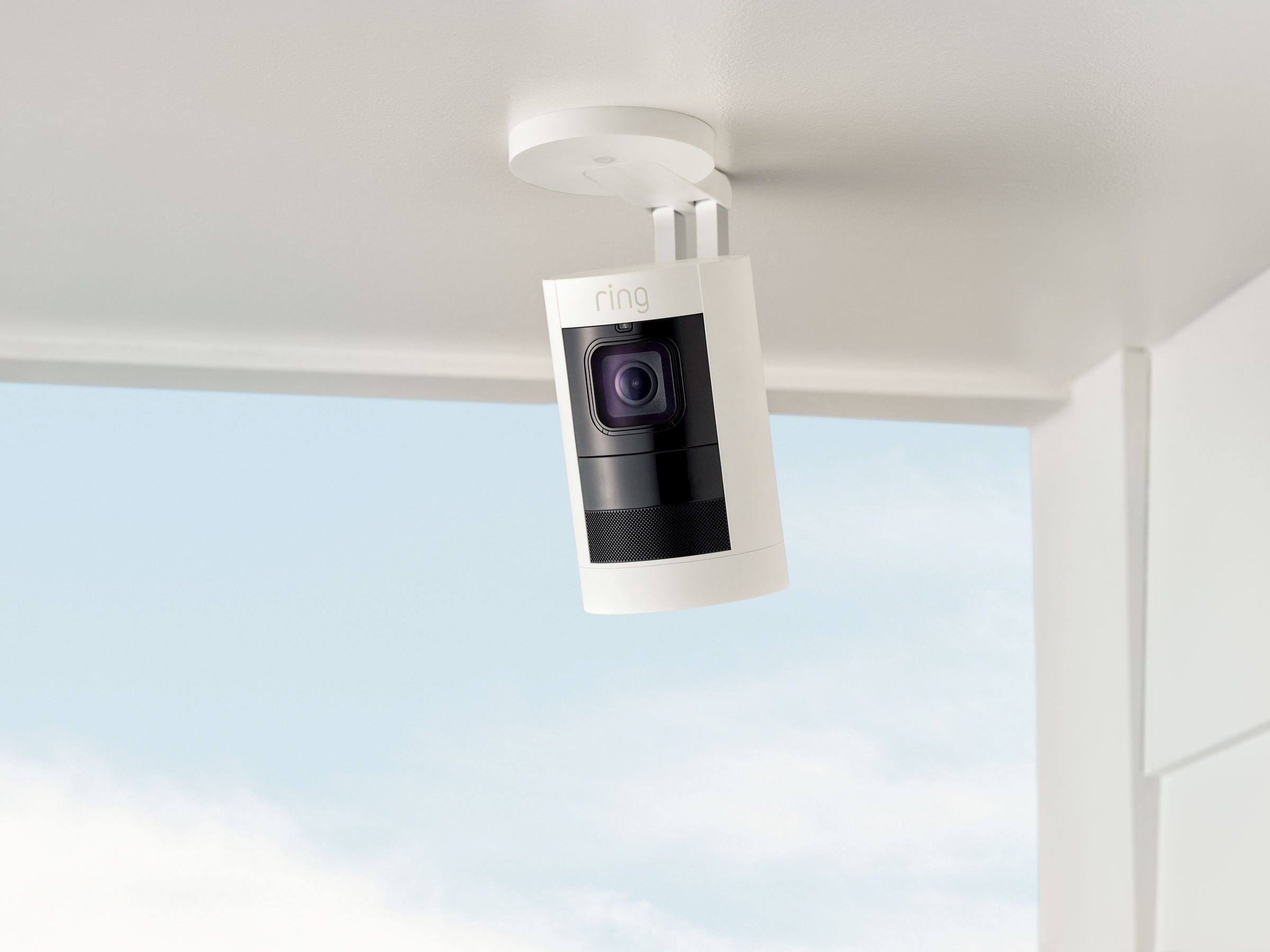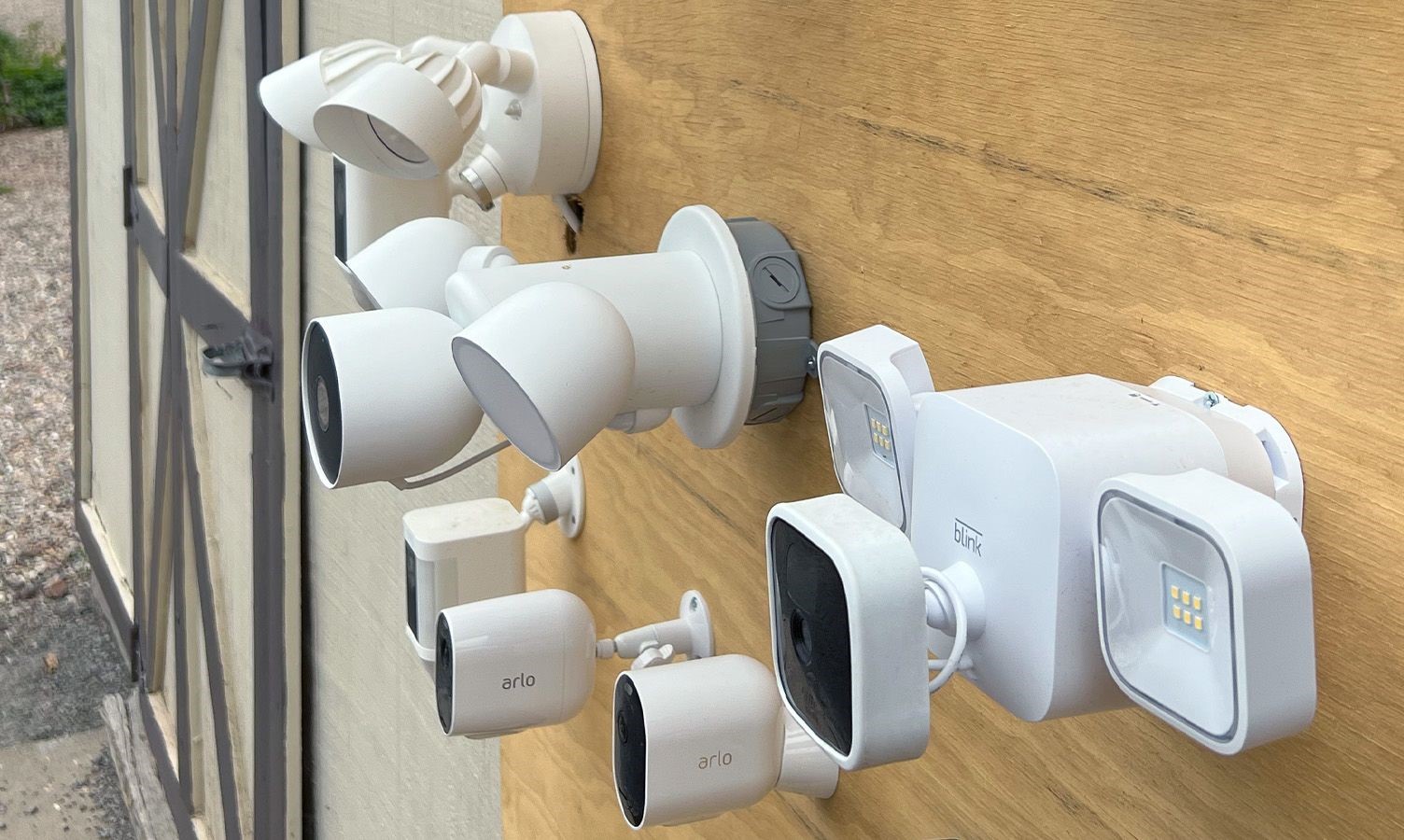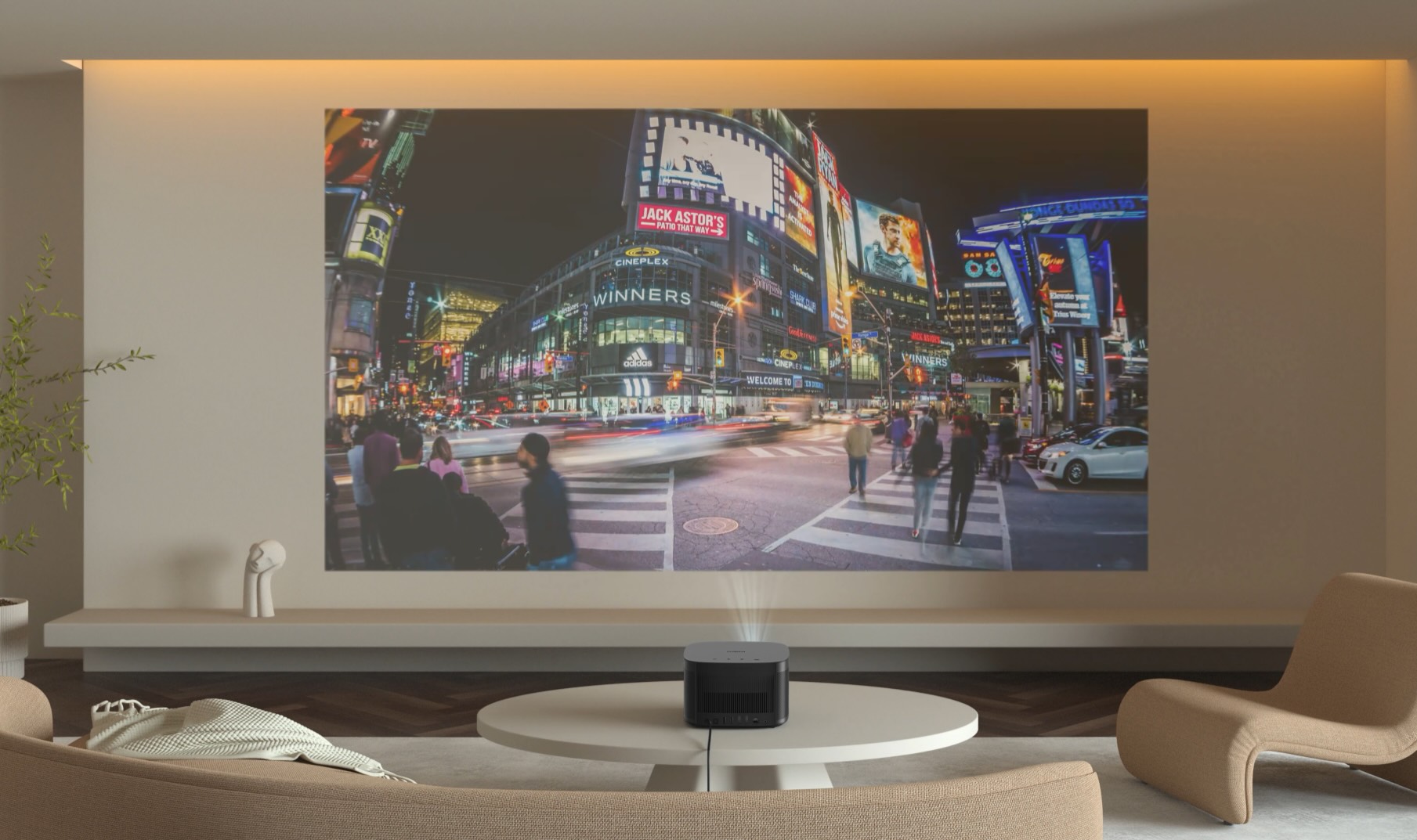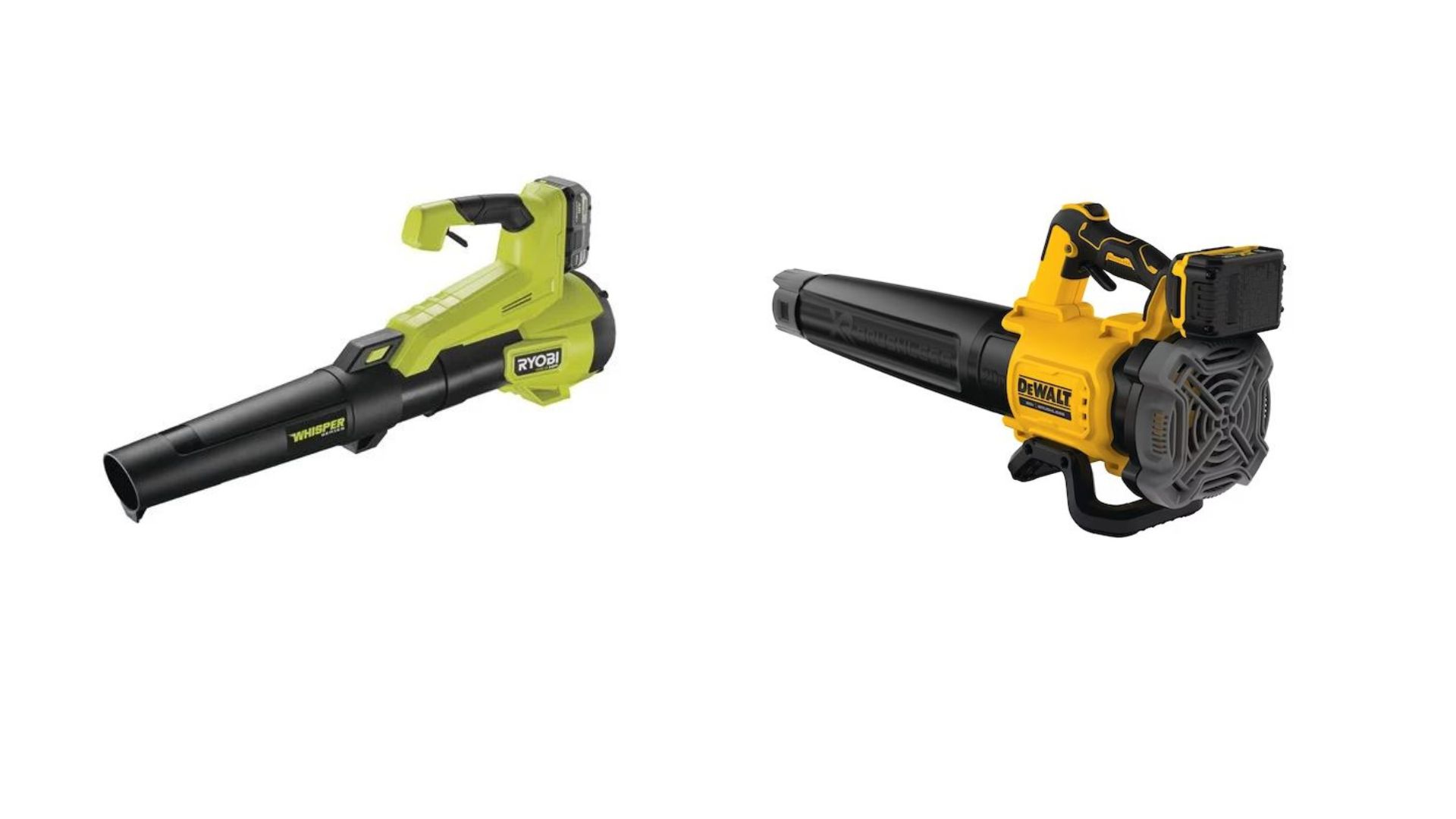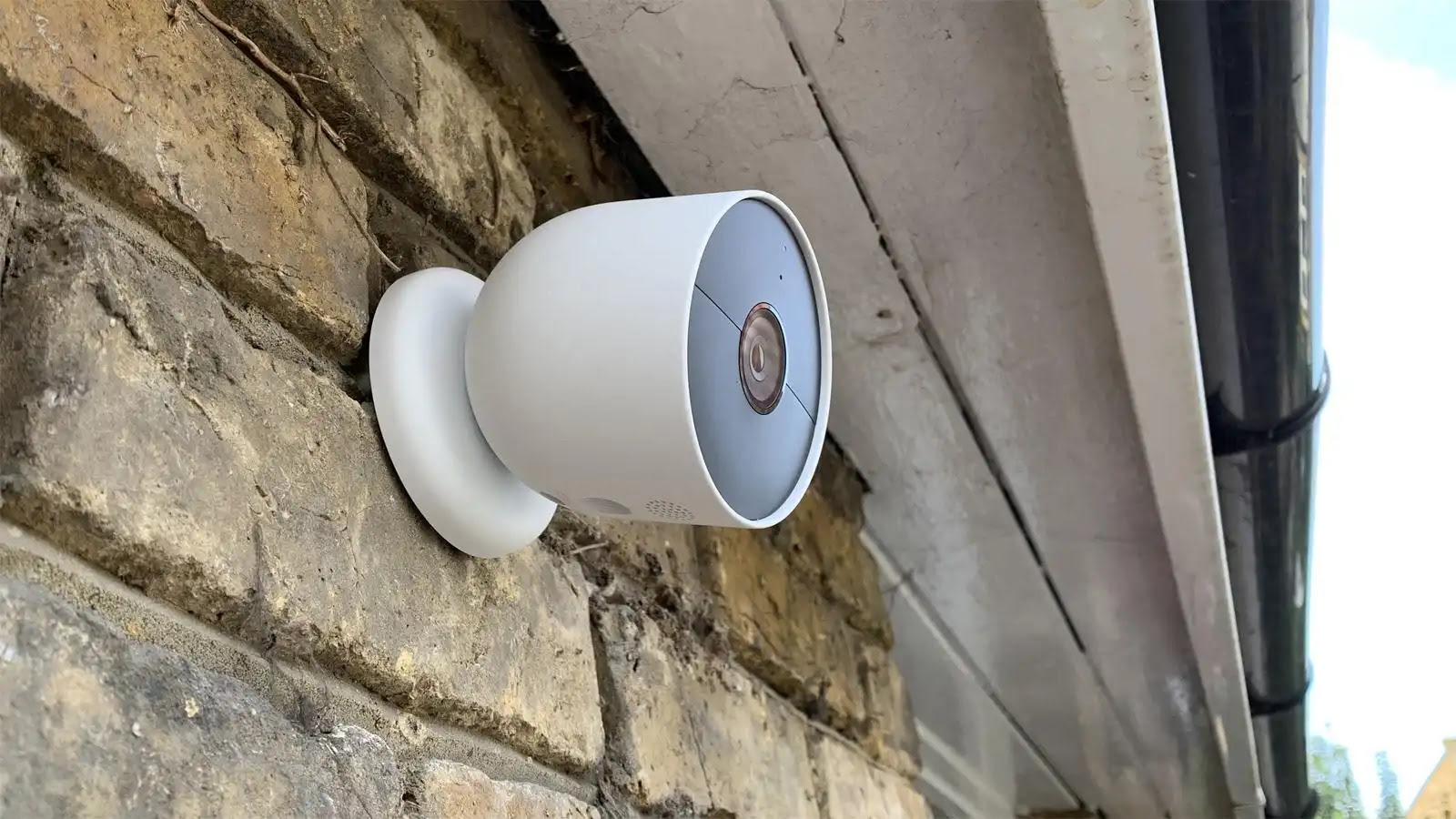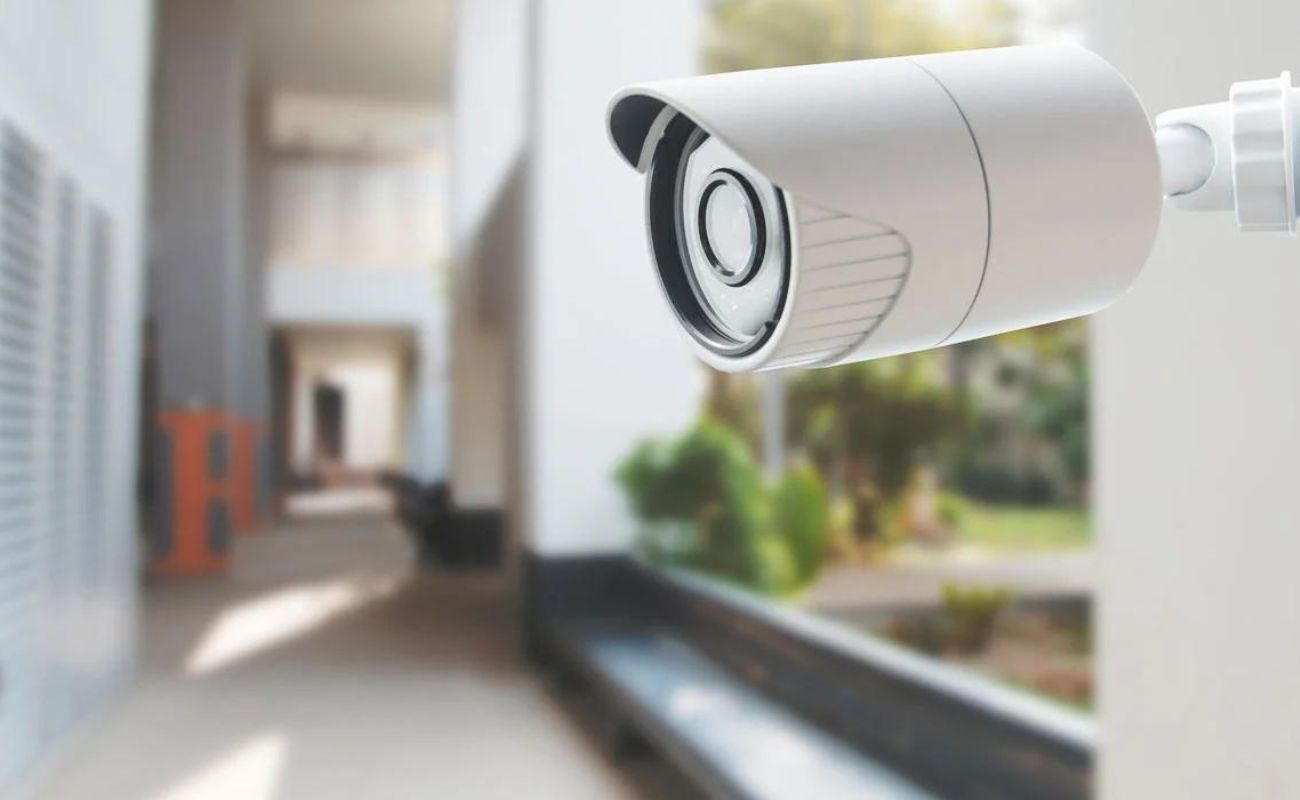Home>Home Security and Surveillance>Which One Is Better: Doorbell Camera Or Outdoor Camera
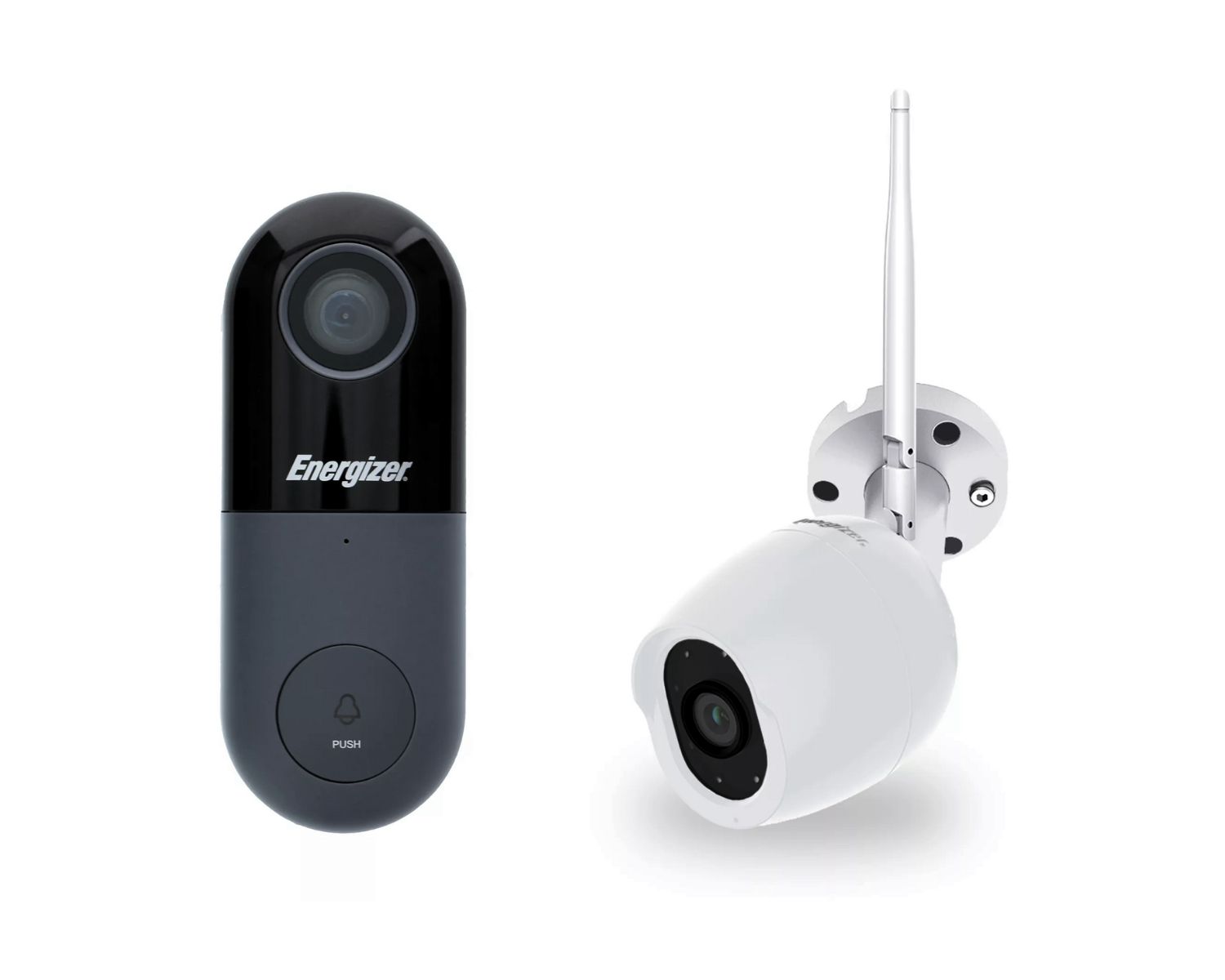

Home Security and Surveillance
Which One Is Better: Doorbell Camera Or Outdoor Camera
Modified: March 6, 2024
Discover which is more effective for your home security and surveillance: a doorbell camera or an outdoor camera. Choose the best option today!
(Many of the links in this article redirect to a specific reviewed product. Your purchase of these products through affiliate links helps to generate commission for Storables.com, at no extra cost. Learn more)
Introduction
Welcome to the world of home security and surveillance! It’s no secret that ensuring the safety of your home and loved ones is a top priority. With advancements in technology, there has been a significant rise in the availability and effectiveness of home security systems. In particular, doorbell cameras and outdoor cameras have gained immense popularity among homeowners for their ability to provide an added layer of protection and peace of mind.
In this article, we will delve into the world of doorbell cameras and outdoor cameras, discussing their advantages, limitations, and ultimately, helping you determine which one is better suited for your specific needs.
Before we dive into the details, it’s essential to understand the fundamental difference between these two types of cameras. Doorbell cameras, as the name suggests, are designed to be installed at your front door, replacing traditional doorbells. They offer a video and audio feed, allowing you to see and communicate with anyone who approaches your doorstep. On the other hand, outdoor cameras are typically mounted in strategic locations around the exterior of your home, providing 24/7 surveillance coverage of the surrounding areas.
Now that we have a basic understanding of doorbell cameras and outdoor cameras, let’s explore their benefits and drawbacks, helping you make a well-informed decision on which one to choose.
Key Takeaways:
- Choose a doorbell camera for targeted front door security, package monitoring, and convenient two-way communication. It’s user-friendly and ideal for smaller areas, but may have limitations in coverage and field of view.
- Opt for outdoor cameras to monitor larger areas, driveways, and outdoor spaces with comprehensive surveillance coverage. They offer high-resolution video, advanced motion detection, and night vision capabilities for enhanced security.
Read more: Which One Is Better: Alexa Or Siri?
Overview of Doorbell Cameras
Doorbell cameras have revolutionized home security by providing an innovative approach to monitoring and protecting your home. These compact devices not only serve as a doorbell but also function as a powerful surveillance tool. Here are some key features and benefits of doorbell cameras:
- Video and Audio Feed: Doorbell cameras offer a live video and audio feed, allowing you to see and communicate with anyone at your doorstep, whether you are at home or away. This feature provides an added layer of security and convenience, as you can verify the identity of visitors and communicate with delivery personnel.
- Motion Detection: Most doorbell cameras come equipped with motion sensors that can detect movement in their field of view. This means that even if someone doesn’t ring the doorbell, you will still receive an alert on your smartphone or other connected device when motion is detected. This feature is especially useful to deter potential intruders and monitor any suspicious activity.
- Cloud Storage: Many doorbell cameras offer the option to store recorded footage in the cloud. This means that even if the camera itself is tampered with or stolen, you can still access the saved footage through a secure online platform. Cloud storage ensures that your valuable video evidence is protected and readily accessible.
- Night Vision: To provide round-the-clock surveillance, most doorbell cameras are equipped with infrared LEDs that allow for clear video footage, even in low-light or nighttime conditions. This ensures that you have visual coverage at all times, improving the security of your home during the night.
- Easy Installation: Doorbell cameras are typically designed for easy installation, with most models requiring a simple connection to your existing doorbell wiring. This means you don’t need to be a tech expert to set up and start using your doorbell camera. Additionally, many manufacturers offer user-friendly mobile apps that guide you through the setup process and provide a seamless user experience.
While doorbell cameras offer several advantages, it’s important to consider their limitations as well. These include:
- Limited Field of View: Due to their placement at the front door, doorbell cameras have a relatively narrow field of view compared to outdoor cameras. This means they might not capture activity happening in other areas of your property.
- Dependence on Wi-Fi: Doorbell cameras rely on a stable internet connection to provide real-time video and audio. If your Wi-Fi signal is weak or unreliable, it may affect the performance and effectiveness of the camera. Additionally, power outages may also disrupt the functionality of the doorbell camera.
- Vulnerable to Tampering: Since doorbell cameras are located in a relatively accessible area, they can be prone to theft or vandalism. However, with the option of cloud storage, important footage can still be retrieved even if the camera is damaged or stolen.
Now that we have explored the features and limitations of doorbell cameras, let’s move on to discussing outdoor cameras in the next section.
Advantages of Doorbell Cameras
Doorbell cameras offer a range of advantages that make them a popular choice among homeowners looking to enhance their home security. Let’s take a closer look at some of the key benefits:
- Enhanced Front Door Security: With a doorbell camera, you can see and communicate with anyone who approaches your front door, even if you’re not at home. This allows you to verify the identity of visitors and ensure the safety of your home and loved ones. It serves as a deterrent for potential burglars and package thieves who are less likely to target a home with visible surveillance.
- Package Delivery Monitoring: One of the main advantages of doorbell cameras is the ability to monitor package deliveries. You can receive real-time notifications when a delivery person arrives, allowing you to instruct them on where to leave the package or to keep an eye on it until you can collect it yourself. This helps prevent package theft, a common issue faced by homeowners.
- Two-Way Communication: Doorbell cameras often come with two-way audio capabilities, allowing you to speak directly to visitors at your door. Whether it’s giving instructions to a delivery driver or communicating with a guest, this feature provides convenience and peace of mind, even when you’re not physically present.
- Security in Darkness: Many doorbell cameras are equipped with night vision technology, ensuring clear visibility even in low-light conditions. This means you can have peace of mind knowing that your front door is monitored, even during the nighttime hours or in poorly lit environments.
- Evidence Collection: In the unfortunate event of a break-in or suspicious activity, doorbell cameras can provide valuable evidence. The recorded footage can be shared with authorities to aid in their investigation, increasing the chances of identifying and apprehending the perpetrators.
- User-Friendly Operation: Doorbell cameras are designed to be user-friendly, with mobile apps that allow you to access the camera feed, receive alerts, and even adjust settings remotely. This ease of use ensures that anyone in your household can operate the camera system effectively, without the need for extensive technical knowledge.
With these advantages, it’s no wonder that doorbell cameras have gained widespread popularity. However, it’s important to also consider the limitations of doorbell cameras, which we will discuss in the next section.
Limitations of Doorbell Cameras
While doorbell cameras offer numerous benefits for home security, it is essential to be aware of their limitations. Understanding these limitations will help you make an informed decision when choosing the right security solution for your home. Here are some factors to consider:
- Restricted Field of View: Doorbell cameras are typically focused on capturing activity at the front door, which means their field of view is limited. They may not provide complete coverage of your entire property, leaving blind spots that could be exploited by intruders in other areas of your home.
- Dependence on Wi-Fi: Doorbell cameras rely on a stable internet connection to function properly. If your Wi-Fi signal is weak or unreliable, it could impact the performance and reliability of the camera. Additionally, power outages and internet disruptions may temporarily disable the camera’s functionality, leaving a gap in your home security coverage.
- Susceptible to Tampering: Due to their installation location at the front door, doorbell cameras can be vulnerable to tampering, theft, or damage. Intruders may attempt to cover or disable the camera to avoid being recorded. However, cloud storage options offered by many doorbell camera manufacturers can help protect valuable footage in case the camera is compromised.
- Privacy Concerns: Since doorbell cameras capture footage of activity happening outside your front door, it’s essential to consider privacy implications. Make sure to inform your neighbors or post signage indicating that video surveillance is in use to respect their privacy rights. Additionally, it’s important to choose a camera that allows you to control and secure access to the recorded footage.
- Weather Vulnerability: Doorbell cameras are exposed to the elements, which means they need to be weatherproof to withstand rain, snow, extreme temperatures, and other environmental factors. Ensure that the doorbell camera you choose is built to withstand the climate conditions in your area to avoid performance issues or premature damage.
- Cost Considerations: Doorbell cameras can range in price, depending on the features and capabilities you need. While they offer a valuable addition to your home security, it’s important to consider your budget and choose a doorbell camera that meets your requirements without overstretching your finances.
By understanding the limitations of doorbell cameras, you can weigh them against the benefits and make an informed decision about whether they are the right choice for your home security needs. Now, let’s move on to exploring outdoor cameras in the next section.
Overview of Outdoor Cameras
Outdoor cameras are an essential component of a comprehensive home security system. These cameras are specifically designed to monitor the exterior of your property and provide surveillance coverage of outdoor areas. Here’s an overview of outdoor cameras and their key features:
1. Wide Coverage: Unlike doorbell cameras, outdoor cameras offer a broader field of view, ensuring comprehensive coverage of your entire property. This allows you to monitor multiple entry points, outdoor spaces, driveways, or any other areas you want to keep an eye on.
2. High-Resolution Video: Outdoor cameras are equipped with high-resolution sensors and lenses to capture clear and detailed video footage. This ensures that you can easily identify people, objects, or activities happening around your property, providing valuable evidence in case of any incidents.
3. Weather-Resistant: Outdoor cameras are built to withstand various weather conditions, including rain, snow, high temperatures, and humidity. They are designed with weather-resistant housing and durable materials, ensuring reliable performance and protection against the elements.
4. Night Vision: Many outdoor cameras are equipped with infrared (IR) LEDs or low-light sensors to provide clear footage even in the dark. This allows for continuous surveillance and ensures that any suspicious activity can be captured, day or night.
5. Advanced Motion Detection: Outdoor cameras often feature advanced motion detection capabilities, including customizable zones and sensitivity settings. This helps minimize false alerts triggered by insignificant movements, such as leaves blowing in the wind, while still capturing and notifying you of any significant motion around your property.
6. Remote Viewing and Mobile Alerts: Most outdoor cameras can be accessed remotely through mobile apps or web interfaces, allowing you to view the live camera feed and receive notifications on your smartphone or other devices. This provides real-time monitoring and the ability to respond quickly to any suspicious activity.
7. Integration with other Security Systems: Outdoor cameras can often be integrated with other components of your home security system, such as alarms, smart locks, or video management software. This allows for a more comprehensive and centralized approach to monitoring and managing your home security.
While outdoor cameras offer significant advantages, it’s important to consider their limitations as well. These will be discussed in the next section.
Advantages of Outdoor Cameras
Outdoor cameras play a crucial role in bolstering the security of your home. Their unique features and capabilities offer several advantages that make them an indispensable component of your home security system. Here are some key benefits of outdoor cameras:
- Comprehensive Surveillance: Outdoor cameras provide wide coverage of your property, allowing you to monitor all outdoor areas. This includes entry points, driveways, yards, and other vulnerable spots. With outdoor cameras, you can keep a watchful eye on potential intruders and deter criminal activity before it happens.
- Deterrence of Criminals: The presence of visible outdoor cameras acts as a powerful deterrent to potential burglars and trespassers. Criminals are less likely to target a property that is equipped with outdoor cameras since they don’t want to risk being captured on video and identified. The mere presence of outdoor cameras can significantly reduce the risk of break-ins and property damage.
- High-Quality Video Footage: Outdoor cameras are designed to capture high-resolution video footage, allowing for clear identification of individuals and objects. This enables you to gather valuable evidence in the event of crimes or incidents, increasing the chances of apprehending perpetrators and recovering stolen property.
- Continuous Surveillance: Outdoor cameras are equipped with features like motion detection and night vision, ensuring round-the-clock surveillance of your property. They can capture and record video footage even in low-light conditions or during the night, providing you with peace of mind and uninterrupted monitoring.
- Remote Access and Alerts: Most outdoor cameras can be accessed remotely through a mobile app or web interface. This means you can view the live camera feed, playback recorded footage, and receive real-time alerts on your smartphone or other connected devices. You can stay informed and take immediate action if any suspicious activity is detected.
- Integration with Home Security System: Outdoor cameras can be seamlessly integrated with other components of your home security system, such as alarms, smart locks, or video management software. This integration allows for a centralized and cohesive approach to managing and monitoring your home security, providing enhanced protection for your property and loved ones.
These advantages highlight the significance of outdoor cameras in strengthening your home security and peace of mind. It’s important to also consider the limitations of outdoor cameras, which we will explore in the next section.
Limitations of Outdoor Cameras
While outdoor cameras offer robust security features, it’s crucial to understand their limitations to make an informed decision about their implementation in your home security system. Here are some limitations to consider:
- Initial Cost and Installation: Outdoor cameras can involve a significant upfront cost, especially if you opt for high-quality cameras with advanced features. Additionally, installation may require professional assistance, depending on the complexity of the system and your property’s layout.
- Privacy Concerns: Installing outdoor cameras means capturing footage of public spaces surrounding your property, which can raise privacy concerns. It’s important to respect the privacy of your neighbors and comply with local regulations by positioning the cameras in a way that does not invade their privacy.
- Maintenance and Upkeep: Outdoor cameras require regular maintenance and upkeep to ensure optimal performance. This includes cleaning the lenses, checking for debris or obstructions, and replacing batteries or power sources as needed. Neglecting maintenance can result in reduced camera effectiveness and a decrease in overall security coverage.
- Reliance on Power and Internet: Outdoor cameras need a reliable power source and a stable internet connection to function effectively. Power outages or internet disruptions can render the cameras temporarily inactive, compromising your home security. It’s important to have backup power options, such as battery backups or secondary power sources, to mitigate these risks.
- Blind Spots and Coverage Limitations: Despite their wide coverage, outdoor cameras may still have blind spots or areas outside their field of view. It’s essential to strategically position the cameras to minimize these blind spots and ensure comprehensive surveillance coverage of your property.
- Weather and Environmental Factors: While outdoor cameras are designed to withstand various weather conditions, extreme temperatures, heavy rain, and severe storms can impact their performance and durability. It’s important to choose cameras with appropriate weatherproofing and take necessary precautions to protect them from harsh elements.
- False Alerts: Outdoor cameras with motion detection capabilities can trigger false alerts due to factors like moving branches, passing animals, or changing lighting conditions. Fine-tuning the sensitivity settings and establishing customized motion detection zones can help minimize false alerts and ensure that you are notified of significant activity.
Understanding these limitations will help you evaluate the suitability of outdoor cameras for your home security needs. By taking these factors into consideration and weighing them against the advantages, you can make an informed decision to enhance the overall security of your property.
Comparison between Doorbell Cameras and Outdoor Cameras
Both doorbell cameras and outdoor cameras offer valuable surveillance capabilities, but they differ in terms of installation, functionality, and coverage. Let’s compare the two to help you determine which option is better suited for your specific requirements:
Installation:
Doorbell cameras are relatively easy to install, typically replacing your existing doorbell and wiring. On the other hand, outdoor cameras require more complex installation, including mounting and positioning the cameras in strategic locations around your property. Outdoor camera installation may also involve running cables and power sources to ensure optimal performance.
Functionality:
Doorbell cameras are primarily focused on monitoring the front entrance of your home, offering live video and audio feed, two-way communication, and motion detection. They provide a clear view of anyone approaching your door, making them ideal for package deliveries and visitor identification. On the other hand, outdoor cameras offer a broader field of view, covering a larger area around your property. They are designed for continuous surveillance, providing high-resolution video, advanced motion detection, and night vision capabilities.
Coverage:
Doorbell cameras have a limited field of view, primarily focused on the immediate area surrounding your front entrance. They may not capture activity in other areas of your property. In contrast, outdoor cameras offer comprehensive coverage of the exterior of your home, including entrances, driveways, and outdoor spaces. This broader coverage helps monitor for potential threats and provides a more robust security solution.
Wireless Connectivity:
Both doorbell cameras and outdoor cameras can be connected to your home’s Wi-Fi network for remote viewing and mobile alerts. However, doorbell cameras are typically more dependent on a stable Wi-Fi connection due to their continuous streaming and two-way communication features. Outdoor cameras may offer more flexibility with wired or wireless connectivity options, depending on the model and installation requirements.
Privacy Considerations:
Doorbell cameras capture footage of individuals directly interacting with your front door, while outdoor cameras monitor activities in public spaces surrounding your property. Privacy concerns are more prominent with doorbell cameras since they record interactions with visitors at close range. It’s essential to inform visitors and adhere to local privacy regulations when using either type of camera.
Ultimately, the choice between doorbell cameras and outdoor cameras depends on your specific needs and priorities. If you prioritize front door security, package delivery monitoring, and convenient two-way communication, a doorbell camera may be the best choice. However, if you require comprehensive surveillance coverage of your entire property and want to monitor outdoor areas, including entrances and driveways, outdoor cameras are ideal. Consider your budget, installation requirements, and desired functionality to make the best decision for your home security system.
Factors to Consider when Choosing between Doorbell Cameras and Outdoor Cameras
When selecting between doorbell cameras and outdoor cameras for your home security system, it’s important to consider several key factors. These factors will help you make an informed decision and choose the camera type that aligns with your specific needs and priorities. Here are some crucial factors to consider:
1. Purpose:
Consider the primary purpose you want the camera to serve. If your main concern is monitoring the front entrance, verifying visitors, and enhancing package delivery security, a doorbell camera is a suitable choice. However, if you require comprehensive surveillance coverage of the exterior areas, including driveways and outdoor spaces, an outdoor camera will be more appropriate.
2. Coverage Area:
Evaluate the size and layout of your property. Doorbell cameras typically have a limited field of view focused on the front entrance. If you have a larger property or want to monitor multiple areas, outdoor cameras with their wider coverage area will be more effective in capturing activity across the entire property.
3. Field of View:
Consider the range of view you need from the camera. Doorbell cameras are designed to capture activity at the front door and immediate surroundings, providing a narrow view. Outdoor cameras, on the other hand, offer broader fields of view, allowing for monitoring of larger areas or multiple entry points.
4. Installation Requirements:
Assess the installation process and requirements for each camera type. Doorbell cameras are typically easier to install, often replacing existing doorbells and utilizing the existing wiring. Outdoor cameras may require more complex installation, including mounting and positioning the cameras, running cables, and providing power sources. Consider your technical skills and willingness to handle the installation or if professional assistance is needed.
5. Connectivity Options:
Consider the connectivity options available for each camera type. Both doorbell cameras and outdoor cameras can be connected to your home’s Wi-Fi network for remote access and mobile alerts. However, outdoor cameras may offer additional wired or wireless connectivity options, providing flexibility in installation and connectivity choices.
6. Budget:
Evaluate your budget for the camera system, including the cost of the cameras, additional equipment (such as storage devices or cloud subscriptions), and potential installation expenses. Doorbell cameras often have a lower upfront cost compared to outdoor cameras, but the total cost may vary based on specific features and brand choices.
7. Privacy Considerations:
Take privacy concerns into account. Doorbell cameras may capture more sensitive interactions with visitors at close range, requiring additional privacy considerations. Ensure you are compliant with local privacy regulations and inform your visitors about the presence of any cameras. Outdoor cameras, while monitoring public areas, should also respect the privacy of your neighbors.
By carefully considering these factors and weighing your priorities, you can make an informed decision on whether doorbell cameras or outdoor cameras are the best fit for your home security system. Remember to choose the camera type that aligns with your specific needs, offers the desired functionality, fits within your budget, and ensures the safety and security of your home and loved ones.
Conclusion
Choosing the right security cameras for your home is a critical decision that can significantly enhance your overall safety and provide peace of mind. Doorbell cameras and outdoor cameras offer distinct features and advantages, and understanding their differences is key to making an informed choice.
Doorbell cameras excel in monitoring the front entrance, enabling you to verify visitors, monitor package deliveries, and enhance communication. They offer a convenient and user-friendly solution for those seeking targeted security coverage for their front door area.
On the other hand, outdoor cameras provide broader surveillance coverage, allowing you to monitor multiple entry points, driveways, and outdoor spaces. With advanced features like wider fields of view, high-resolution video, and night vision capabilities, outdoor cameras offer extensive and comprehensive security coverage for your entire property.
When deciding between doorbell cameras and outdoor cameras, consider factors such as the purpose, coverage area, field of view, installation requirements, connectivity options, budget, and privacy concerns. Analyze your specific needs and priorities to make the best choice for your home security system.
Remember that while doorbell cameras are ideal for front door security and package monitoring, they may have limitations in terms of coverage and field of view. Outdoor cameras provide more comprehensive surveillance coverage but may require more complex installation and have a higher upfront cost. It’s essential to evaluate these factors based on your unique requirements and make an informed decision.
By selecting the right cameras for your home security system, you can enhance the safety of your property and loved ones, deter potential intruders, and gain peace of mind. Whether you choose doorbell cameras, outdoor cameras, or a combination of both, investing in a reliable and effective surveillance solution will help protect your home and ensure a greater sense of security for years to come.
Frequently Asked Questions about Which One Is Better: Doorbell Camera Or Outdoor Camera
Was this page helpful?
At Storables.com, we guarantee accurate and reliable information. Our content, validated by Expert Board Contributors, is crafted following stringent Editorial Policies. We're committed to providing you with well-researched, expert-backed insights for all your informational needs.
